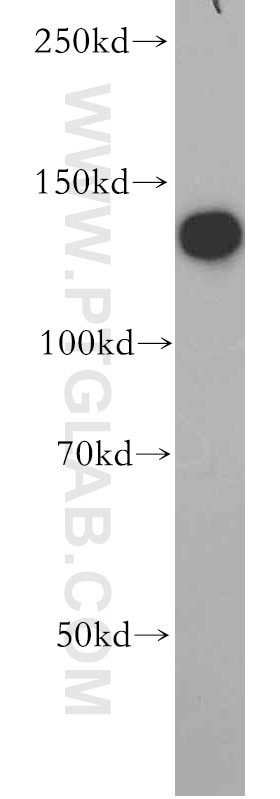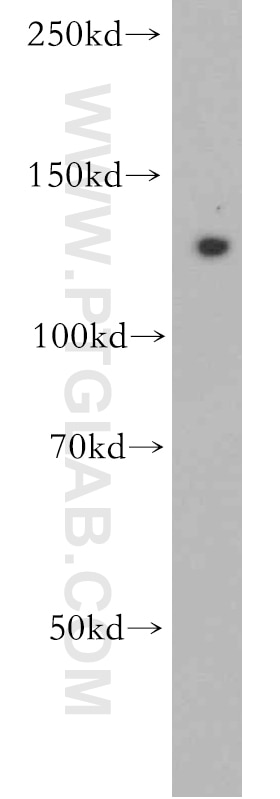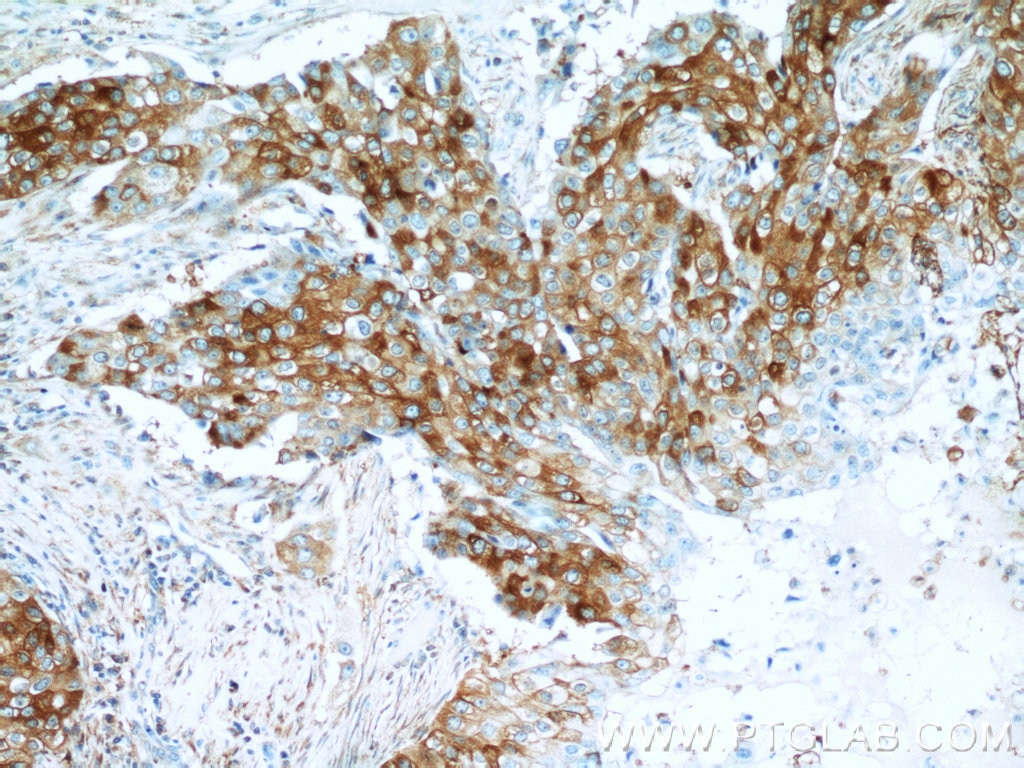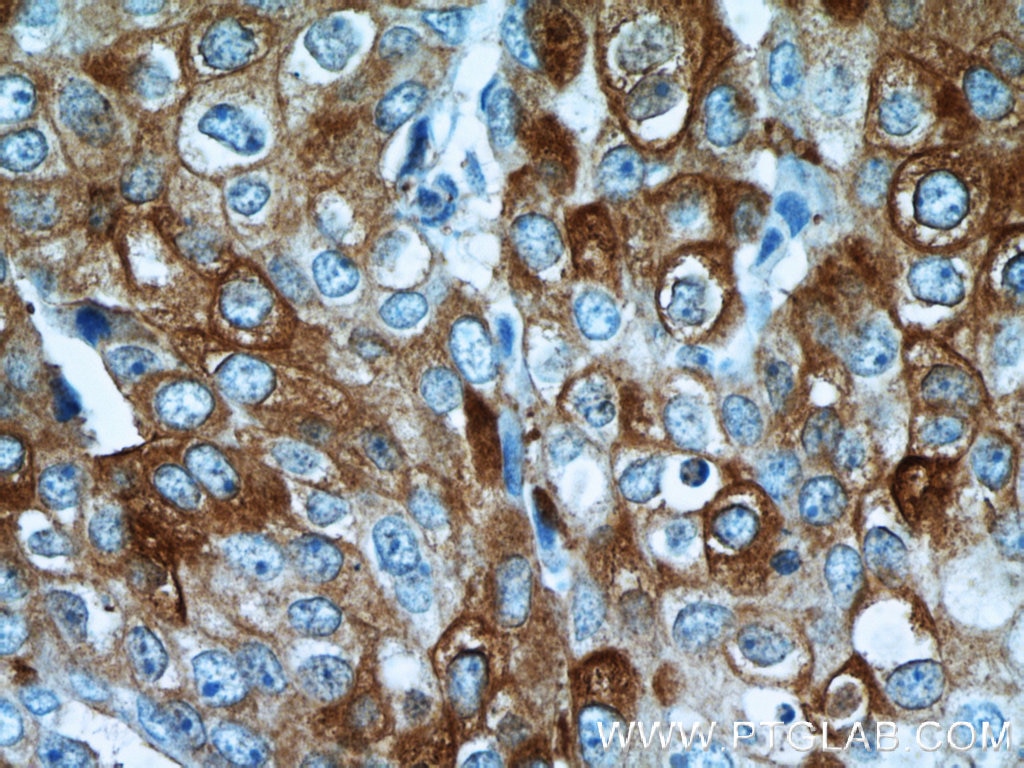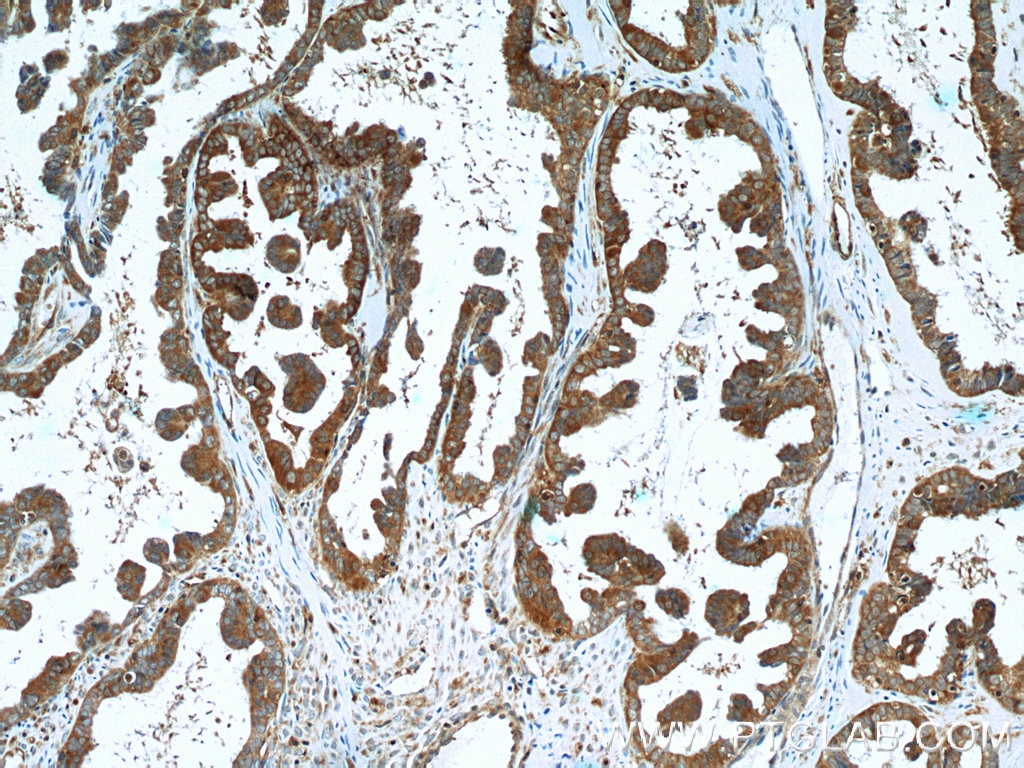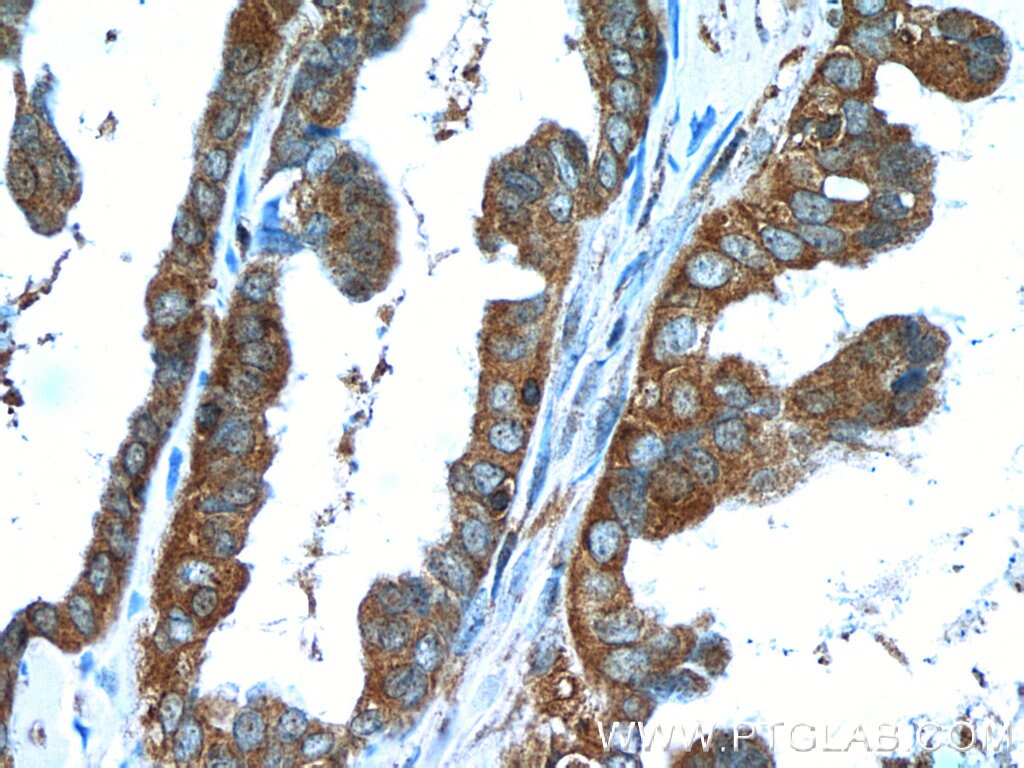Anticorps Polyclonal de lapin anti-ROR1
ROR1 Polyclonal Antibody for WB, IHC, ELISA
Hôte / Isotype
Lapin / IgG
Réactivité testée
Humain, rat, souris
Applications
WB, IF, IHC, ELISA
Conjugaison
Non conjugué
N° de cat : 20629-1-AP
Synonymes
Galerie de données de validation
Applications testées
| Résultats positifs en WB | cellules K-562, cellules HeLa |
| Résultats positifs en IHC | tissu de cancer du sein humain, tissu de tumeur ovarienne humain il est suggéré de démasquer l'antigène avec un tampon de TE buffer pH 9.0; (*) À défaut, 'le démasquage de l'antigène peut être 'effectué avec un tampon citrate pH 6,0. |
Dilution recommandée
| Application | Dilution |
|---|---|
| Western Blot (WB) | WB : 1:500-1:2000 |
| Immunohistochimie (IHC) | IHC : 1:20-1:200 |
| It is recommended that this reagent should be titrated in each testing system to obtain optimal results. | |
| Sample-dependent, check data in validation data gallery | |
Applications publiées
| WB | See 2 publications below |
| IHC | See 4 publications below |
| IF | See 1 publications below |
Informations sur le produit
20629-1-AP cible ROR1 dans les applications de WB, IF, IHC, ELISA et montre une réactivité avec des échantillons Humain, rat, souris
| Réactivité | Humain, rat, souris |
| Réactivité citée | rat, Humain |
| Hôte / Isotype | Lapin / IgG |
| Clonalité | Polyclonal |
| Type | Anticorps |
| Immunogène | ROR1 Protéine recombinante Ag14586 |
| Nom complet | receptor tyrosine kinase-like orphan receptor 1 |
| Masse moléculaire calculée | 937 aa, 104 kDa |
| Poids moléculaire observé | 130-140 kDa |
| Numéro d’acquisition GenBank | BC006374 |
| Symbole du gène | ROR1 |
| Identification du gène (NCBI) | 4919 |
| Conjugaison | Non conjugué |
| Forme | Liquide |
| Méthode de purification | Purification par affinité contre l'antigène |
| Tampon de stockage | PBS with 0.02% sodium azide and 50% glycerol |
| Conditions de stockage | Stocker à -20°C. Stable pendant un an après l'expédition. L'aliquotage n'est pas nécessaire pour le stockage à -20oC Les 20ul contiennent 0,1% de BSA. |
Informations générales
ROR1 is a member of the RTK family of orphan receptors related to muscle specific kinase and Trk neurotrophin receptors (PMID: 18546292). ROR1 is primarily expressed by neural crest cells during embryogenesis. High expression of ROR1 is reported in many types of malignancies and is thought to be involved in tumor growth, apoptosis, and epithelial-mesenchymal transition (PMID: 26245996). The human ROR1 gene encodes a 937-amino acid protein with an Ig-like domain, a cysteine-rich domain, a kringle domain, a tyrosine kinase domain and a proline-rich domain. The calculated molecular weight of ROR1 is 104 kDa, but ROR1 has multiple N-glycosylation sites that generate post-translationally modified ROR1 at 130 kDa (PMID: 24752542).
Protocole
| Product Specific Protocols | |
|---|---|
| WB protocol for ROR1 antibody 20629-1-AP | Download protocol |
| IHC protocol for ROR1 antibody 20629-1-AP | Download protocol |
| Standard Protocols | |
|---|---|
| Click here to view our Standard Protocols |
Publications
| Species | Application | Title |
|---|---|---|
Virchows Arch Expression of ROR1 has prognostic significance in triple negative breast cancer. | ||
Medicina (Kaunas) Meta-Analysis of Survival Effects of Receptor Tyrosine Kinase-like Orphan Receptor 1 (ROR1) | ||
Biomedicines ROR1 Is Expressed in Diffuse Large B-Cell Lymphoma (DLBCL) and a Small Molecule Inhibitor of ROR1 (KAN0441571C) Induced Apoptosis of Lymphoma Cells. | ||
Cancer Manag Res Wnt5a induces ROR1 and ROR2 to activate RhoA in esophageal squamous cell carcinoma cells. | ||
Am J Physiol Cell Physiol Periodontal Ligaments Enhance Neurite Outgrowth in Trigeminal Ganglion Neurons through Wnt5a Production Induced by Mechanical Stimulation |
